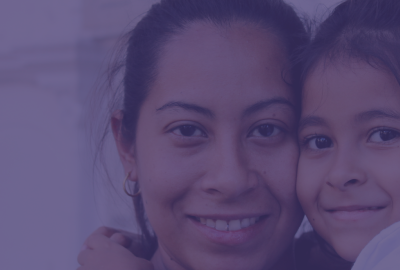
by Julia Daniel
National Education Policy Center
Context
Community schools are a place-based school improvement strategy that create equitable access to educational opportunities for students, families, and their communities. By partnering with community based organizations and collaboratively engaging families and communities within the schools, community schools seek to provide engaging learning opportunities for young people that are grounded in their cultural backgrounds, as well as services and other resources for them and their families to help address some of the out of school barriers that can make learning more challenging. Community schools are one approach to redress historical inequities created by disinvestment and racial segregation of low-income communities and communities of color.
Evidence
There is strong evidence that community schools as a whole, when supported by four key pillars, contribute to school improvement, and student learning and well-being.1 While community schools vary because they respond to local conditions, many have four pillars that help community schools create optimal conditions for teaching and learning. A recent review of 143 research studies on community schools and these pillars found that “well-implemented community schools lead to improvement in student and school outcomes and contribute to meeting the educational needs of low-achieving students in high- poverty schools.”1 Each pillar contributes to improved outcomes in different ways and can support each other when the strategy is implemented in a cohesive way. They are:
Integrated student supports
which can include counseling, medical and dental care, transportation and housing assistance, and other resources identified by community members, families, and students to help address needs. These supports, which draw from local organizations as key community assets, are associated with significant improvements in attendance, behavior, social functioning, and academic achievement.3
Expanded learning time and opportunities,
which can take the form of longer school days and summer programs that are academically rich and engaging, creating community-based opportunities for learning that are culturally relevant for students. 4 These opportunities are associated with positive academic and nonacademic outcomes such as improved attendance, behavior, and academic achievement.5
Family and community engagement,
which in community schools should provide meaningful ways for families and community members to participate in multiple aspects of teaching and learning as well as activities as the school. 6 This engagement is associated with reduced absenteeism, improved academic outcomes, and student reports of more positive school climates as well as increased trust among students, parents, and staff, which has positive effects on student outcomes. 7 Community schools are particularly well-positioned to create meaningful ways to engage families and community members by using the other 3 pillars to support opportunities for such engagement.
Collaborative leadership and practice
in community schools includes the creation of spaces and structures for stakeholders to bring their different forms of expertise to work together towards a common vision. Collaborative leadership and practice can create the conditions necessary to improve student learning and well-being, as well as improve relationships within and beyond the school walls. For example, teacher-peer learning practices can improve relationships, teacher job satisfaction, and working conditions, contributing to better student achievement. 8
In the context of increasingly wide achievement and opportunity gaps, community school strategies can provide access to good schools for all students, especially those living in poverty. Evidence for the strategy is strong, such that policymakers can specify community schools as part of ESSA Title I set-aside school improvement plans and in proposals for grants under Title IV. If resources are limited in a state or district, policymakers can begin implementing the strategy in neighborhoods where community schools are most needed and, therefore, students are most likely to benefit. Research on the economic returns of community schools show that social return on investments from providing wraparound services and other supports ranges from $3 to $15 for every dollar invested in such programs. By supporting student learning, creating opportunities for collaborative leadership, creating equitable access to resources and expanded learning opportunities, and meaningfully engaging families and community members, the community school strategy can begin to address historical inequities that have created deep achievement and opportunity gaps.
Bottom Line
There is a strong base of research that supports community schools as a strategy for creating equitable access to deep and engaging learning opportunities while coordinating and providing resources and supports to address some of the disadvantages created by long-term disinvestment of low-income communities and communities of color.
Related Research
Durlak, J. A., Weissberg, R. P., & Pachan, M. (2010). A meta-analysis of after-school programs that seek to promote personal and social skills in children and adolescents. American Journal of Community Psychology, 45(3–4), 294–309.
Biag, M., & Castrechini, S. (2016). Coordinated strategies to help the whole child: Examining the contributions of full-service community schools. Journal of Education for Students Placed at Risk, 21(3), 157–173.
Examples of Best Policy/Practice
New York City Community Schools Initiative
Community Schools Toolkit by Center for Popular Democracy & Coalition for Educational Justice
Building Community Schools: A Guide for Action
Community Schools Standards by Coalition for Community Schools
Multimedia
What the Four Pillars of Community Schools Look Like in Action
Author
Julia Daniel, Doctoral Student Research National Education Policy Center Julia.daniel@colorado.edu
Footnotes
- Maier, A., Daniel, J., Oakes, J., & Lam, L. (2017). Community schools as an effective school improvement strategy: A review of the evidence. Palo Alto, CA: Learning Policy Institute
- Maier, A., Daniel, J., Oakes, J., & Lam, L. (2017); Suter, J., & Bruns, E. J. (2008). A narrative review of wraparound outcome studies. In E. J. Bruns & J. S. Walker (Eds.), The resource guide to wraparound. Portland, OR; Moore, K. A., & Emig, C. (2014). Integrated student supports: A summary of the evidence base for policymakers. Washington, DC: Child Trends. 86.
- Daniel, J. Quartz, K., Oakes, J. (2019); Melaville, A., Berg, A. C., & Blank, M. J. (2006) Community-based learning: Engaging students for success and citizenship. Washington, DC: Coalition for Community Schools. 174; Redd, Z., Boccanfuso, C., Walker, K., Princiotta, D., Knewstub, D., and Moore, K. (2012). Expanding time for learning both inside and outside the classroom: A review of the evidence base. Bethesda, MD: Child Trends, p.24.
- Maier, A., Daniel, J., Oakes, J., & Lam, L. (2017).
- Sanders, M. G. (2001). The role of “community” in comprehensive school, family, and ommunity partnership programs. The Elementary School Journal, 102(1): 19–34; Nettles, S. M. (1991). Community involvement and disadvantaged students: A review. Review of Educational Research, 61(3), 379–406;
- Henderson, A. T., & Mapp, K. L. (2002). A new wave of evidence: The impact of school, family, and community connections on student achievement. Austin, TX: National Center for Family and Community Connections with Schools; Sanders, M. G. (2001); Bryk, A. S., Sebring, P. B., Allensworth, E., Luppescu, S., & Easton, J. Q. (2010). Organizing Schools for Improvement: Lessons from Chicago. Chicago: University of Chicago Press; Warren, M. (2005). Communities and schools: A new view of urban education reform. Harvard Educational Review, 75(2), 133–173. Castrechini, S., & London, R. A. (2012). Positive student outcomes in community schools. Washington, DC: Center for American Progress. Fehrer, K., & Leos-Urbel, J. (2016). “We’re one team”: Examining community school implementation strategies in Oakland. Education Sciences, 6(3), 26. 225.
- Papay, J. P., & Kraft, M. A. (2015). Productivity returns to experience in the teacher labor market: Methodological challenges and new evidence on long-term career improvement. Journal of Public Economics, 130: 105–119; Conley, S. & Cooper, B. (2013). Moving From Teacher Isolation to Collaboration: Enhancing Professionalism and School Quality. Lanham, MD: Rowman & Littlefield; Darling-Hammond, L. (2010). The Flat World and Education: How America’s Commitment to Equity Will Determine Our Future. New York: Teachers College Press;
- Kirp, D. L. (2013). Improbable Scholars: The Rebirth of a Great American School and a Strategy for American Education. New York, NY: Oxford University Pres

